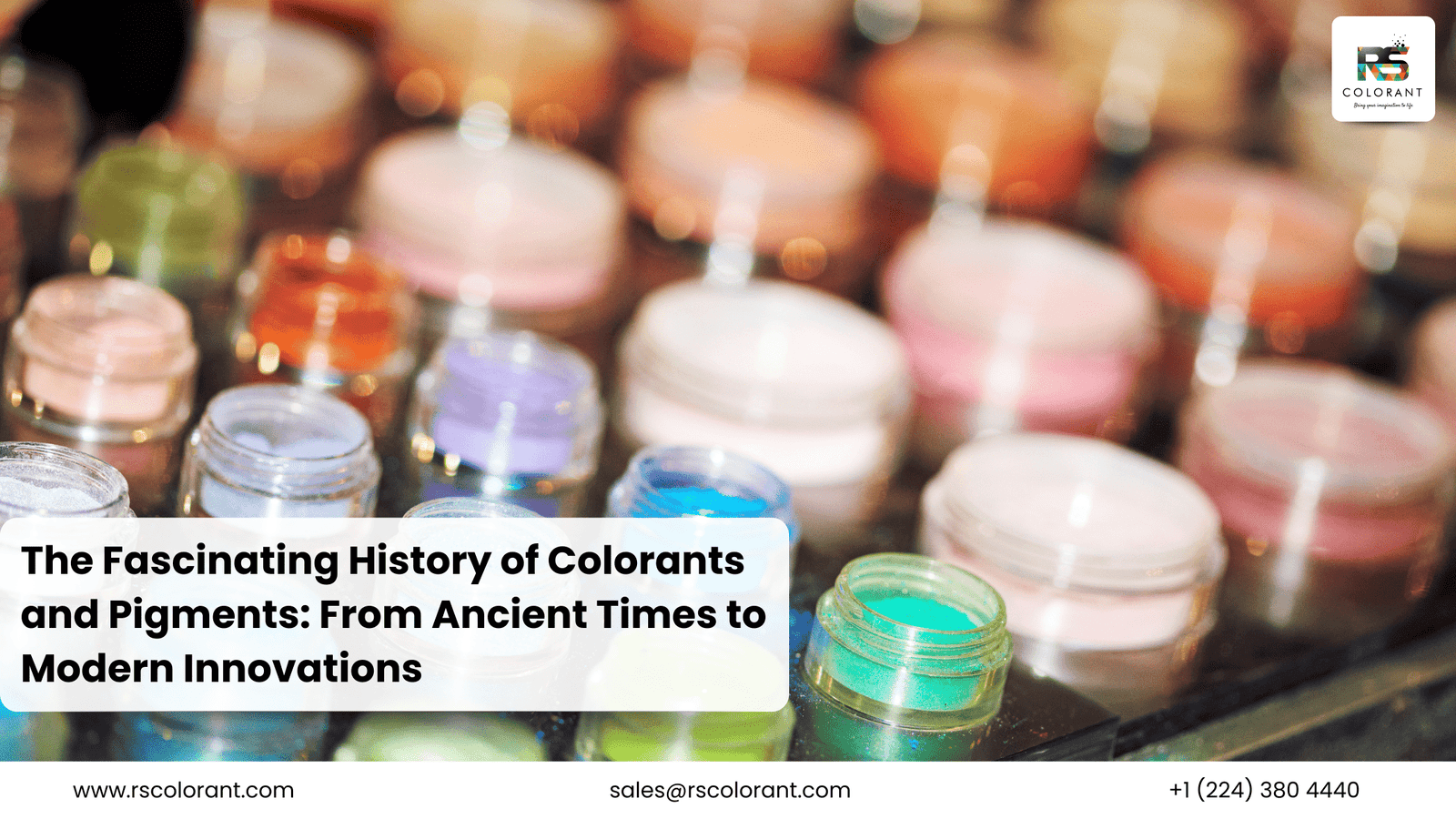The History of Colorants and Pigments
Color is an intrinsic part of our lives, influencing everything from art and fashion to emotions and cultural identity. But have you ever wondered about the history of the pigments and dyes that bring our world to life? Let’s dive into the vibrant journey of colorants and pigments throughout history.
Ancient Origins of Colorants
In the dawn of human history, our ancestors sought ways to bring color into their lives. Prehistoric artists used natural materials like charcoal, red ochre, and yellow earth to create the first cave paintings. These early pigments, derived from minerals, plants, and even insects, were the building blocks of humanity’s artistic expression.
Egyptian Innovations
The ancient Egyptians were pioneers in the use of colorants, utilizing materials like ochre and malachite to adorn their tombs and temples. One of their most notable contributions was Egyptian blue, a synthetic pigment made from copper, silica, lime, and alkali. This vivid blue became a symbol of prestige and was used extensively in art and artifacts.
Colorants in Ancient Greece and Rome
The Greeks and Romans further expanded the palette of available pigments. They favored vibrant hues like Tyrian purple, derived from sea snails, and vermilion, made from cinnabar. These societies developed sophisticated techniques for applying these pigments to pottery, frescoes, and textiles, leaving a legacy of color that endures in classical art.
Medieval Advancements in Europe
The Middle Ages saw significant advancements in the development of new dyes and pigments. Artisans and alchemists experimented with various substances to create colors like ultramarine blue, made from the semi-precious stone lapis lazuli, and verdigris, a green pigment produced through the oxidation of copper. These innovations were crucial for the vibrant religious and secular art of the period.
The Renaissance Era
The Renaissance was a period of unprecedented creativity, and color played a central role. Artists like Leonardo da Vinci and Michelangelo experimented with a broader range of pigments, including newly discovered synthetic colors. The introduction of oil paints allowed for richer, more varied palettes, revolutionizing art and making vivid, long-lasting colors accessible to a wider audience.
Colorants in the New World
As Europeans explored the Americas, they encountered indigenous cultures with their own unique sources of color. The cochineal insect, used by the Aztecs to produce a brilliant red dye, became one of the most valuable exports to Europe. This exchange of knowledge and resources significantly expanded the range of available pigments and dyes.
The Industrial Revolution
The Industrial Revolution marked a turning point in the production of colorants. Advances in chemistry led to the mass production of synthetic dyes, drastically reducing costs and making vibrant colors accessible to the masses. The textile industry, in particular, benefited from these innovations, leading to a colorful explosion in fashion and fabrics.
Modern Chemical Advances
The development of aniline dyes in the 19th century represented a major breakthrough in the world of colorants. These synthetic dyes, derived from coal tar, offered a broader spectrum of colors and greater stability than natural dyes. Organic pigments also emerged, providing new possibilities for artists and manufacturers alike.
Environmental and Health Concerns
While early synthetic dyes revolutionized industries, they also raised significant health and environmental concerns. Many of these dyes contained toxic substances, leading to adverse effects on workers and ecosystems. This spurred a movement towards safer, more sustainable alternatives, with modern regulations ensuring that today’s colorants are much safer.
Colorants in Contemporary Art and Industry
Today, the use of colorants spans a wide range of applications, from traditional art to cutting-edge digital technologies. Artists continue to explore new pigments, while industries leverage advanced color technologies to enhance product design and marketing. The digital age has also introduced new ways of creating and manipulating color, with software and digital printing offering unprecedented precision and variety.
Sustainability and the Future of Pigments
As we look to the future, sustainability is a key focus in the development of colorants. Eco-friendly dyes and pigments, made from renewable resources and designed to minimize environmental impact, are becoming increasingly popular. Innovations in sustainable practices are ensuring that we can enjoy vibrant colors without compromising the health of our planet.
Cultural Significance of Colors
Colors have deep cultural and psychological significance, influencing our moods, behaviors, and social dynamics. Different cultures attribute various meanings to colors, from the purity symbolized by white in Western weddings to the joy associated with yellow in many Asian cultures. Understanding these nuances enhances our appreciation of color in art and daily life.
Technological Innovations in Colorants
The field of colorants continues to evolve with advancements in technology. Nanotechnology, for example, is opening up new possibilities for creating pigments with enhanced properties, such as increased brightness and durability. As science progresses, we can expect even more innovative approaches to colorant production and application.
Conclusion
The history of colorants and pigments is a testament to human ingenuity and our enduring desire to bring color into our lives. From the rudimentary cave paintings of our ancestors to the sophisticated digital color technologies of today, the journey of colorants reflects the evolution of our societies and cultures. As we move forward, the quest for vibrant, sustainable, and meaningful colors will undoubtedly continue to shape our world.
FAQs
What are the oldest known pigments? The oldest known pigments are red ochre, charcoal, and yellow earth, used by prehistoric humans in cave paintings.
How did ancient civilizations make colorants? Ancient civilizations made colorants from natural materials like minerals, plants, and insects. Techniques varied widely, with some cultures developing sophisticated methods for creating vibrant and lasting colors.
What are synthetic dyes? Synthetic dyes are man-made colorants, typically derived from chemical processes. They were first developed in the 19th century and revolutionized industries by providing a wide range of stable, vibrant colors at a lower cost.
How have environmental concerns shaped the development of colorants? Environmental concerns have led to the development of safer, more sustainable colorants. Modern regulations and technological advancements aim to minimize the health and environmental impacts of dye production and use.
What is the future of colorants and pigments? The future of colorants and pigments lies in sustainability and technological innovation. Eco-friendly dyes, advanced digital color technologies, and nanotechnology are paving the way for safer, more vibrant, and versatile colorants.




